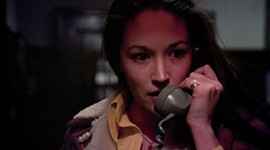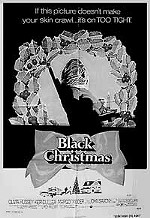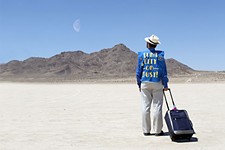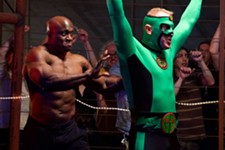The Bold One
Action/horror heartthrob John Saxon brings two classics to the Alamo
By Marc Savlov, Fri., Nov. 21, 2003
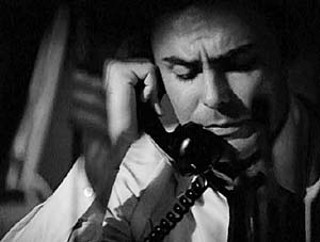
After nearly a half-century in Hollywood, Brooklyn-born actor John Saxon, who began his career at the Actors Studio under the legendary Stella Adler, has tackled everything from Fifties-era teen heartthrob roles, in films like Summer Love and The Restless Years, to co-starring alongside Marlon Brando in 1966's The Appaloosa. His chiseled good looks and rich, unforgettable voice have served him well, but it's his work in genre films like Enter the Dragon, with Bruce Lee, and Wes Craven's A Nightmare on Elm Street (and two of that film's sequels) that have won him the most fans and secured his place in the annals of pop culture.
These days Saxon is taking a break from acting -- by his own admission, he hasn't acted in two years -- to focus on screenwriting and making appearances, like his upcoming visit to the Alamo Drafthouse Village, where he'll screen two of his more notable films, Black Christmas and Strange Shadows in an Empty Room. We spoke to him from his home in Los Angeles about his lengthy career, the fickle nature of Hollywood, and the nature of modern film violence.
Austin Chronicle: You started off as a teen-mag heartthrob and somehow managed to end up as one of the horror genre's enduring faces 30 years later. What's changed the most for you, in terms of the roles you've done and the films you've been offered?
John Saxon: There certainly have been a lot of changes, although they come in such gradations that most people have either forgotten, or, if they're too young, they never knew about them in the first place.
I began in Universal in 1954, and that year Otto Preminger made a picture from a play called The Moon Is Blue. It was threatened with not being given the American Legion of Decency or the motion pictures reviewers' seal of approval because it had a word in it that they insisted Otto Preminger delete, and he wouldn't. The word was "virgin." The one word, virgin. Not having that seal of approval could have meant considerable loss because all the churches would then say that this was a film not to be seen.
AC: You've done a number of great horror films in your career, from Dario Argento's Tenebre to over-the-top gore epics like Cannibal Apocalypse -- what do you think of the current cycle of horror films we've got going on? Do you follow them at all?
JS: Well, you know, in the late Sixties and early Seventies you had the arrival of violence in films, with Bonnie and Clyde and The Wild Bunch, and suddenly violence was the theme, the bread and butter and ketchup of the whole thing. Now those days have gone by and people accept not only very frank sex in movies, but also that sort of violence in the movies. Just this past fall we've had the release of The Texas Chainsaw Massacre, Kill Bill, Freddie Vs. Jason, and so on. I haven't seen any of these films, but I've read about them, and I can imagine what's going on there. My feelings are that storytelling, which requires a little bit of patience and involvement, has kind of been overlooked. If it isn't a socko film with lots of violence and car crashes and stuff, it runs into distribution problems.
AC: Are you a fan of Quentin Tarantino's films? I keep thinking you're going to turn up in one of them sooner or later.
JS: I saw Pulp Fiction, and I thought that was pretty amusing and cleverly put together and unusual. I think after that I started to watch Reservoir Dogs on TV, and I left: The violence was too gleeful for me. Subsequently, I watched Jackie Brown -- I had read the book -- and I thought it was pretty good. I know what Tarantino's direction was, you know? But I haven't seen Kill Bill yet, but I think I will. I'm not sure. I walked out of The Matrix.
All of these kinds of changes in the movies came and developed in arcs. I remember when critics first saw Bonnie and Clyde, they were up in arms about the violence. I thought it was ironic and amusing, and eventually the critics came around to that point of view. But I don't see ... with these other types of movies that I mentioned, it's just overkill, literally.
AC: What attracts you to a script of a project, and has that changed over the years?
JS: As a young actor, I went after roles that were amusing or funny. If I had a bad-guy role and he had some funny lines, I got kicks out of the mentality, looking at the mentality of the bad guy, or trying to express it. It was not that I enjoyed the villains, but that there was a certain irony, partially because I thought, early on, that most of the heroes were Hollywood-constructed ones, so it was easy to poke a little fun at them once in a while.
AC : I heard you were working on a script of your own, right? What's going on with that?
JS: Yeah, I'm writing a script myself right now, and what I'm looking for is deep emotional connections with the characters, something that they're discovering, something inside of them that they're bringing up, something that they just can't repress any longer. And something that the audience could really discover with them.
AC: You've got to write your biography sometime. From Brando to Argento and Battle Beyond the Stars? That's a hell of a career you've got.
JS: Yeah, well, I've been asked, and I've started it a couple of times, on different angles, and maybe one day I will, but you know what? There's time for that because I'd like to have the whole story. I'd like to think there's still a lot for me to do, you know? ![]()
The Alamo Drafthouse Village (2700 W. Anderson) will screen Strange Shadows in an Empty Room at 7pm and Black Christmas at 9:45pm, Saturday, Nov. 22. John Saxon will be in attendance at both screenings. Tickets are $9 per screening/$7 students. For more information, visit www.drafthouse.com or call 476-1320.





